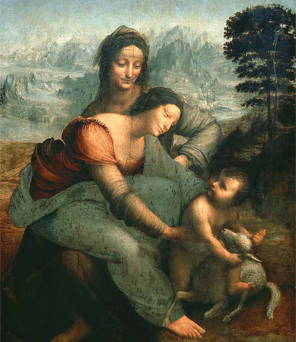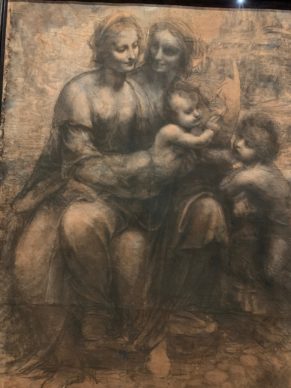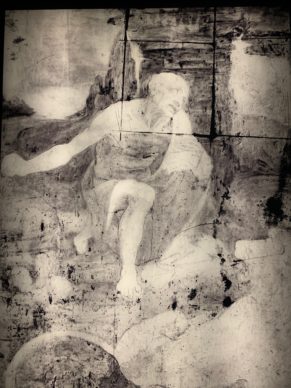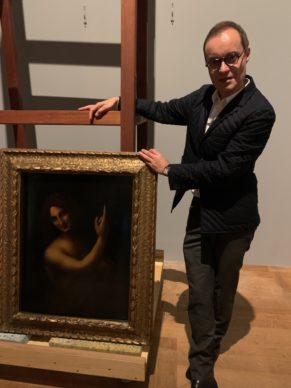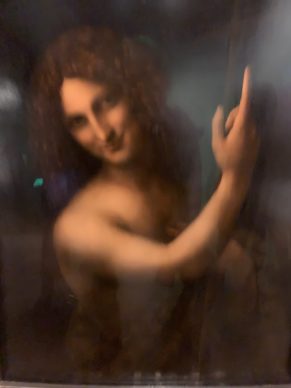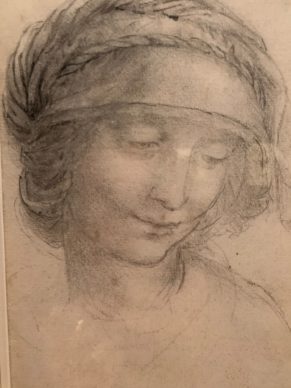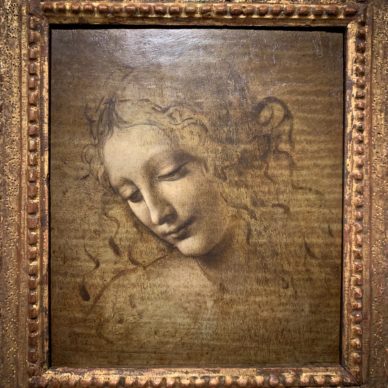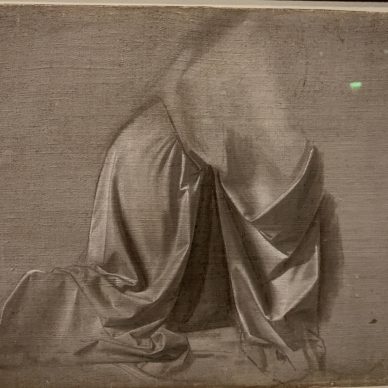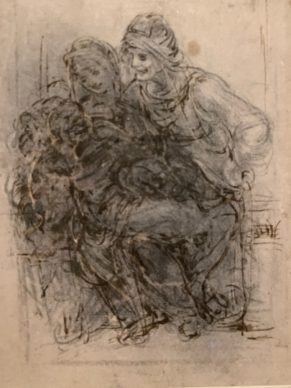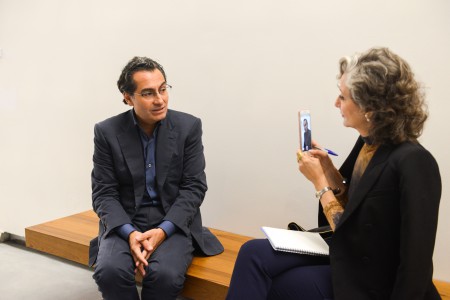Unmissable
It’s an exhibition the likes of which are seen perhaps once in a decade. An assemblage of artworks, some of which are intensely emotive. The Louvre is currently staging an exceptional exhibition dedicated to Leonardo da Vinci.
9 paintings
Featuring 9 paintings out of the 15 unanimously attributed to him, the show is also displaying 88 drawings including the emblematic “Vitruvian Man”, arriving from Italy under difficult circumstances following a recent ruling by the Italian courts, along with the master’s notebooks “borrowed” by Bonaparte in Florence and now owned by the Institut de France, which lay dormant in the vaults of the Banque de France, and also pages from the Codex Leicester belonging to Bill Gates.
The Queen of England
Of the 8000 known papers by the Florentine master, the Queen of England alone has 450 in her possession and she’s loaning 25 to the Louvre.
Infrared reflectography
All of the incontestable paintings, including those that are absent, are systematically displayed here in the form of life-size images made using infrared reflectography (a highly detailed image in black and white obtained from the different layers of pigments).
Salvator Mundi
But don’t expect to see the “Salvator Mundi”, the overly restored painting bought for 450 million euros at auction in November 2017. The Louvre was unable to obtain it.
Huge deployment of energy
What they have managed to assemble is a tremendous achievement and the fruit of a huge deployment of artistic and diplomatic energy.
Sébastien Allard
Sébastien Allard, director of the paintings department at the Louvre, talks about the difficulties involved in staging the exhibition.
The perfect painting
This show has a single goal: to prove that Leonardo spent his entire life in pursuit of producing the perfect painting.
Watch the video of the co curator Vincent Delieuvin to find out more:
The spirit of the 21st century
And in fact if Leonardo’s genius is the subject of such fascination today it’s also most likely because his life and works are very much aligned with the spirit of the 21st century.
Blurring the boundaries between the sexes
At a time when the current climate is buzzing with calls for greater awareness of LGBT+ rights, we find various instances in Leonardo’s oeuvre where his representations blur the boundaries between the sexes, incorporating both man and woman.
Saint John the Baptist
In this sense his painting of Saint John the Baptist, depicted as graceful and mischievous, at the Louvre is an excellent example. The British art historian Kenneth Clark (1903-1983) wrote: “our very sense of propriety is outraged,” this image being “contrary, in a practically blasphemous way, to the ardent aesthetic of the gospels”. Note, for the record, that Leonardo introduced particles of glass into the famous sfumato in this painting and that every photograph taken by fans today (me included) looks blurry as a result.
A green Leonardo
Leonardo liked nature and animals. Two texts even state that he was a vegetarian. He wrote: “If you are, as you have described yourself, the king of the animals, why do you not help them so that they may presently be able to give you their young” (1).
Martin Clayton
But as the curator of the Queen of England’s collections, Martin Clayton, points out: “What fascinated him in nature relates to its perfect conception”. The Louvre is displaying a set of his very detailed botanical studies in which he observes, among other things, the growth mechanisms of plants and trees.
Vincent Delieuvin
Vincent Delieuvin adds: “He started out as a virtuoso artist before also becoming a scientist. That’s what we are showing in the exhibition.”
Psychology of his figures
Leonardo, like a number of modern artists, was obsessed with the expressivity of his figures. It took him no less than 20 years to compose, decompose and recompose the expressions in one of his most sublime and complex works, “The Virgin and Child with Saint Anne”. Thirty drawings document its gestation in the exhibition. Look closely at the picture: the three figures are animated by three smiles expressing three different emotions. Mary’s mother watches over, gazing serenely into the distance, and Mary herself seems to suppress a certain melancholy as though she already knows the cruel fate awaiting her offspring.
Verocchio
It was in the studio of Verrocchio, Florence’s superstar sculptor, that Leonardo cut his teeth. Through him Da Vinci learned to animate faces by giving them a psychological content (see the report on the exhibition on Verrocchio in Florence, which is travelling to Washington this autumn). The curator of the exhibition also maintains, supported by the painting, that the Florentine genius looked to Antonello da Messina. His famous portrait of a “Condottiere” is likened for the occasion to the Leonardo-esque production.
Unfinished yet complete
One of the sources of irritation for Leonardo’s sponsors related the fact that he rarely finished his works, especially in his mature period. Leonardo thus heralded the modern aesthetic that is unfinished… yet complete.
Saint Jerome
The work that best exemplifies this practice is his “St Jerome” praying, which belongs to the collections at the Vatican. While the silhouette is outlined, numerous sections remain unpainted. “People have learned to find it marvellous. Leonardo’s works were in a state of perpetual evolution. From the late 1470s he was no longer content with perfect forms. He transported his paintings and modified them over time,” observes the co-curator of the exhibition.
Movement in painting
Ultimately, Leonardo, like all modern artists, was obsessed with the idea of movement in painting. “He was an enemy of static poses. Each element must be interacting with the context,” observes Martin Clayton.
The Battle of Anghiari
The work that might be said to best express this art of movement is “The Battle of Anghiari”, a fresco commissioned in 1503 yet uncompleted, of which only copies and preparatory studies remain. The bodies of horses and warriors are intertwined… The expressions of the men are frozen in the midst of the action, as in a remarkable study of a face from the Budapest museum, which is one of the seven sketches exhibited at the Louvre on the subject.
The Louvre’s exhibition conveys an exceptional emotional message.
Until 24 February. https://www.louvre.fr/
(1) Leonardo da Vinci. Walter Isaacson.
Support independent news on art.
Your contribution : Make a monthly commitment to support JB Reports or a one off contribution as and when you feel like it. Choose the option that suits you best.
Need to cancel a recurring donation? Please go here.
The donation is considered to be a subscription for a fee set by the donor and for a duration also set by the donor.

